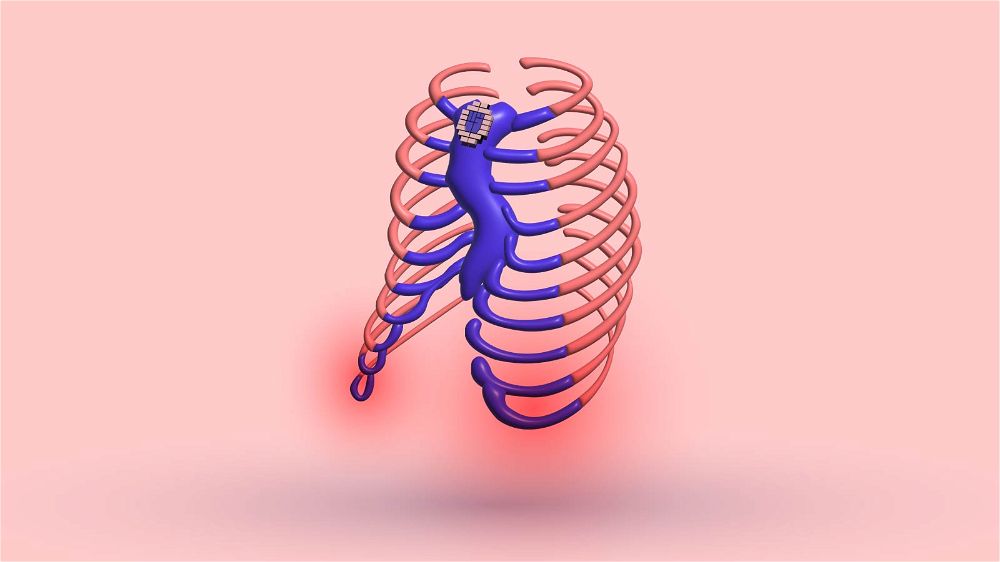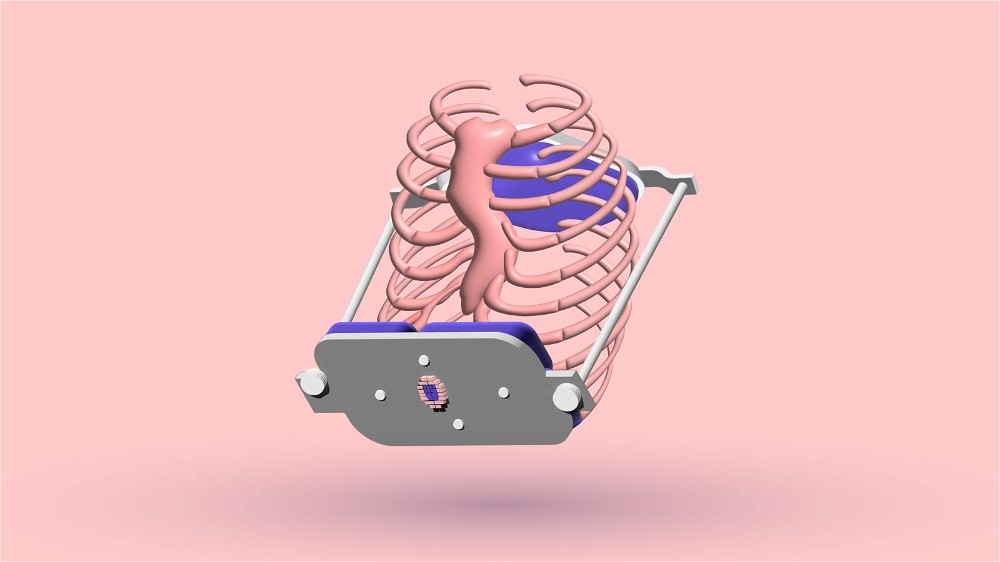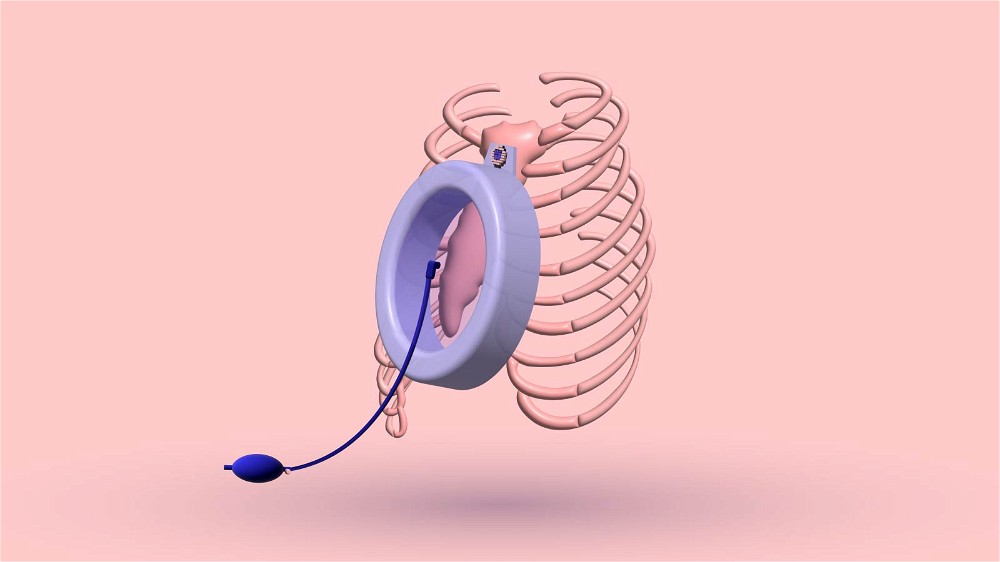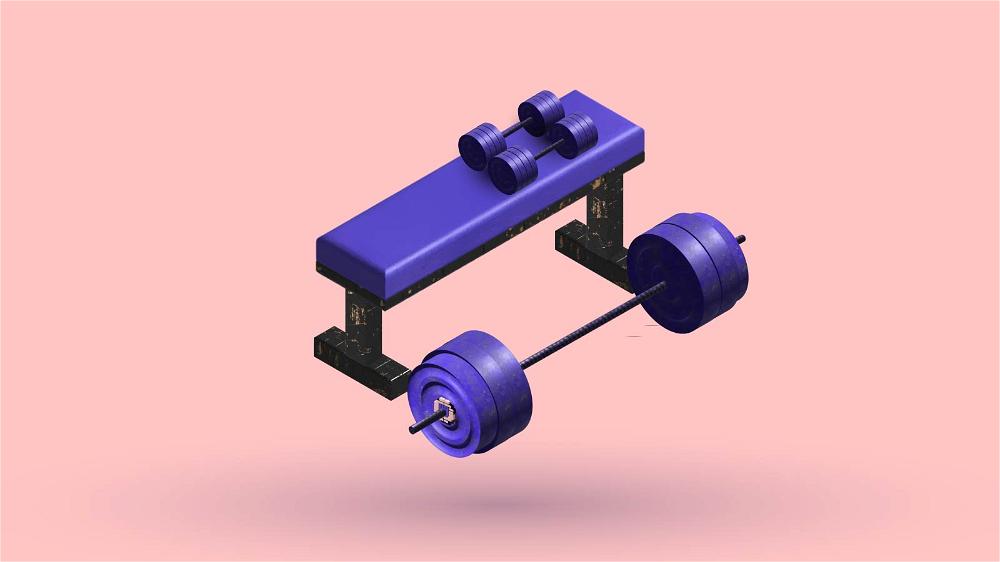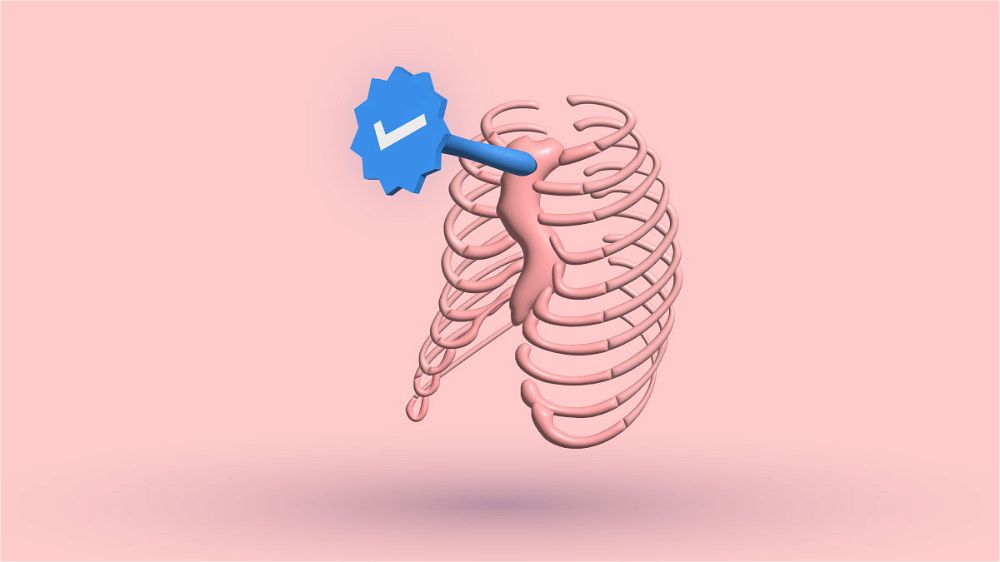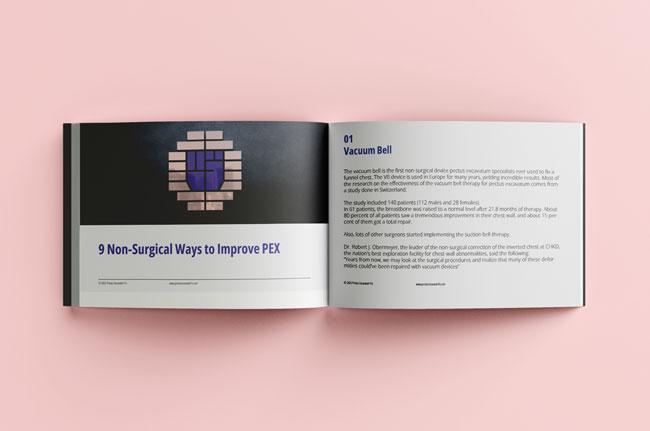The most frequent chest deformity in dogs is pectus excavatum. It is otherwise known as a funnel chest. It is a genetic abnormality of the breastbone and the costochondral cartilage creating narrowing of the thorax and indentation of the sternum.
These deformations can compress the heart and lungs, lessening pulmonary and cardiac capacity. Flat chests and sunken chests in dogs manifest the same disease.
Between the two, the flat chest is a less critical type of pectus excavatum.
What Causes the Sunken Chest Deformity in Puppies?

The exact cause of pectus excavatum in dogs and cats remains unknown. Nevertheless, a study has registered the hereditary occurrence of inverted chest deformity in littermate dogs. In addition to these dogs, inherited indentation of the chest has been reported in three-setter crossbreeds, two pugs, and two Welsh terriers.
Also, obtained pectus excavatum, secondary to chronic higher airway resistance, was reported in numerous scientific cases. This study confirms that the upper airway hindrance can create a chest wall deformity. Besides the congenital inclinations to the deformation, some environmental forces may also play a role in provoking pectus excavatum.
8 Additional Possible Causes are
- Malformations of the breastbone or rib cartilage
- Immoderate tension within the uterus
- Upper respiratory system hindrances
- Abbreviated Ligaments of the Diaphragm
- Insufficiencies in the diaphragm musculature
- Oddly Dense Substernal Ligaments
- Osteogenesis (Weak Bones)
- Irregular growth of the cartilage
10 Symptoms of Pectoralis Excavatum in Canines

Pectus excavatum in dogs is identified by a narrowing or a dip in the breastbone. If your dog exhibits at least two of the below-mentioned symptoms, you should ask for treatment immediately.
List of most frequent symptoms
- A sunken chest
- Trouble with breathing
- Frequent coughing or wheezing
- Intolerance for physical exercise
- Digesting difficulties
- Rapid loss of weight
- Heart murmurs (unusual blood flow through the heart)
- Cyanosis (blueing of the surface of the skin)
- Widespread bodily frailty
- Constant vomiting
3 Ways to Diagnose Pectus Excavatum in Your Pup

Diagnosing pectus excavatum deformity in dogs can be done in three ways:
- Clinical symptoms
- Bodily checkup
- Chest X-Rays
Clinical Symptoms
The clinical symptoms are associated with heart and lung compression. Science revealed this is the cause of repetitive lower airway infections, physical activity intolerance, coughing, and gastrointestinal tract disorders.
Physical Checkup
The physical checkup is the most apparent diagnosis to make. All you need to do is check the dog's sternum. If it is indented, there is a high chance it may suffer from pectus excavatum.
Additionally, frequent coughing, heart murmur (loud sound of the heart that you can hear), or cyanosis (blueish discoloration on the dog's legs) can be noticed. Even though the heart murmur's roots may be clinical, vets can identify the noisy heartbeat without performing echocardiography.
The thoracic x-rays are the best way to identify whether the dog has pectus excavatum.
Chest X-Rays
Puppy x-rays are the most commonly utilized diagnostic imaging method in the veterinary industry. They are economical and can be afforded by any dog owner.
They can diagnose the situation of the skeletal construction correctly. A moderate variation of the caudal sternebrae, a difference in the cardiac shape, and small lung parenchymal pathology are usually present on the chest x-rays.
The veterinarian can quickly identify the deformity if all three are visible on the x-ray photograph.
How Hazardous is the Inverted Chest Deformity in Canines?

Just like in humans, pectus excavatum in dogs isn't just cosmetic. Depending on the severity of the deformity, it can cause plenty of internal damage that can lower the dog's life expectancy and health if left untreated.
Let me list a few health hazards:
- Heart murmurs - These are noises throughout the pulse cycle. This isn't a disease. However, murmurs are usually the result of an underlying heart complication. It is generally caused by uncontrolled blood flow inside or around your heart.
- Severe dyspnea - This is also known as shortness of breath. It is likewise present in humans who suffer from pectus excavatum too. This may limit the dog's physical capabilities. You will often notice how easily it will get out of breath after doing some non-intense bodily action. Dyspnea is connected to the critical decrease in the dimension of the chest indentation.
As you can see, the skeletal abnormalities of the pectus excavatum will lead to the squeezing of the organs in the breast. That's what causes a decrease in pulmonary and cardiac capacity.
How to Treat Pectus Excavatum in Dogs?

There is an ongoing debate about whether a surgical correction should be considered for all dogs with an indented chest. As you may already know, the pectus excavatum condition in dogs can be progressive.
However, there is scientific evidence of a female schnauzer dog that was diagnosed with pectus excavatum. The veterinarians instructed the owner to squeeze both sides of their chest simultaneously.
After the last medical assessment, which was done about two and a half years after starting this non-surgical treatment, the dog became clinically healthy.
The dog's heart wasn't displaced, and the cardiac functioning was normal.
6 Standard Treatments of Pectoralis Excavatum in Pooches
The risks of pectus excavatum in puppies are nothing to be messed with. A precise and timely treatment can save your dog's life.
The following are the six most commonly used treatments for concave chest deformity in dogs.
- Surgical procedure
- Corrective braces
- Temporary hospital care
- Physiotherapy
- Antibiotics
- Pain relief medicine
The surgical procedure with a splint is the most widely used method of correcting deformity.
Everything You Need to Know About Pectus Excavatum Dog Surgery

External splinting is the most commonly used surgical technique for correcting pectus excavatum in dogs. It is suggested for slightly critically affected dogs that have pliable sternal bones.
The costal cartilages and the sunken breastbone are more flexible in younger dogs. This technique will relieve decreased breathing patterns when performed correctly in young animals.
The external splinting technique aims to obtain lasting straightening of the breastbone. That's done with the short-term pressure of the splint.
The stitches around it achieve pressure on the breastbone. They are attached to the external splint shaped to the form of the chest.
How Long Should the Dog Wear the Splint?
It mainly depends on the severity of the deformity. The minimal extent that a brace must stay in position to cause lasting changes in the dog's breastbone is unknown.
Plenty of scientific research on external splinting reports an average period of one to three weeks for a correction of the indented breast deformity with a splint.
Potential Complications
The external splinting complications can be dangerous and even deadly. Piercing the heart can quickly occur if the veterinary surgeon is not careful.
Injury of the central chest artery with a wildly passed needle can cause a deadly loss of blood. If the lungs are accidentally penetrated, that may result in pneumothorax.
Specialists also listed two other less critical post-operative problems. They are early tears of the stitches and skin irritation soreness caused by the movement of the splint.
How Long Until You See Results?
If the surgery is successful and everything goes as planned, your dog should see improvement in about three weeks. The seven-week-old Shih Tzu dog suffering from pectus excavatum in this 2010 study corrected its malformation entirely after wearing the splint for three weeks.
The chest x-rays performed on the dog confirmed that. After the surgery, all heart and breathing problems were resolved. Four months after the surgery, the veterinarians decided to do echocardiography.
They saw that no reoccurrence of pectus excavatum had happened and that the dog's internal organs were working correctly.
Which Dog Breeds Are Most Prone to Pectus Excavatum?

Pectus excavatum can occur in nearly every single dog breed. However, in practice, it mainly occurs in brachycephalic species.
This dog breed can be easily recognized by its small nose and squashed facial form. By nature, they have breathing problems.
Brachycephalic puppies have elonged soft palates (soft tissue positioned at the end of the roof of the mouth). Also, they have thin noses and unusually few tracheas.
These irregularities are the reason why these dogs have difficulty breathing.
Furthermore, if they suffer from pectus excavatum, they'll have a lot of lung and cardiac problems that require urgent treatment.
9 Most Common Brachycephalic Dog Breeds
- English and French bulldogs
- Bullmastiffs
- Boston terriers
- Boxers
- Pugs
- Shih Tzus
- Lhasa apsos
- Pekingese
- Cavalier King Charles Spaniels
If your lovely puppy is a breed of this kind, make sure that you check for pectus excavatum symptoms. If you're unsure what to observe, please bring your dog to the veterinarian.
Are Dogs the Only Species that Can Suffer from Concave Breast?

In addition to dogs, pectus excavatum has been reported in humans, felines, cows, and sheep. The malformation is notable in non-domestic mammals such as sea otters, ruffed lemurs, and rare mammals from the rainforests of Asia.
Even though you may consider the deformed concave chest to be exceptional, it is more common than you think.
Conclusion
In this article, I covered the most important things you need to pay attention to if your dog suffers from a caved-in chest deformity. The most common indicator of the condition is a dent in the chest.
Please don't hesitate if you notice a bone abnormality. Don't let your puppy suffer and live badly. The malformation is proven to reduce the life expectancy of the dog.
The sooner you bring your pup to the veterinary clinic, the better! I hope I have covered everything that concerned you!
If you have any questions, please leave them in the comment section below.
8 Sources
- Ellison G, Halling KB. Atypical pectus excavatum in two Welsh terrier littermates. J Small Anim Pract. 2004 Jun;45(6):311–4.
- Gifford AT, Flanders JA. External splinting for treatment of pectus excavatum in a dog with right ventricular outflow obstruction. J Vet Cardiol. 2010 Apr;12(1):53–7.
- How to access research remotely [Internet]. [cited 2022 Dec 4]. Available from: https://www.cabdirect.org/cabdirect/welcome/?target=%2fcabdirect%2fabstract%2f19912215354
- Fossum TW, Boudrieau RJ, Hobson HP. Pectus excavatum in eight dogs and six cats. Journal of the American Animal Hospital Association. 1989;25(5):595–605.
- Pearson JL. Pectus excavatum in the dog (a case report). Vet Med Small Anim Clin. 1973 Feb;68(2):125–8.
- Rahal SC, Morishin Filho MM, Hatschbach E, Machado VMV, Aptekmann KP, Corrêa TP. Pectus excavatum in two littermate dogs. Can Vet J. 2008 Sep;49(9):880–4.
- Fossum TW, Boudrieau RJ, Hobson HP, Rudy RL. Surgical correction of pectus excavatum, using external splintage in two dogs and a cat. J Am Vet Med Assoc. 1989 Jul 1;195(1):91–7.
- Trachea. In: Wikipedia [Internet]. 2022 [cited 2022 Dec 4]. Available from: https://en.wikipedia.org/w/index.php?title=Trachea&oldid=1117780283






